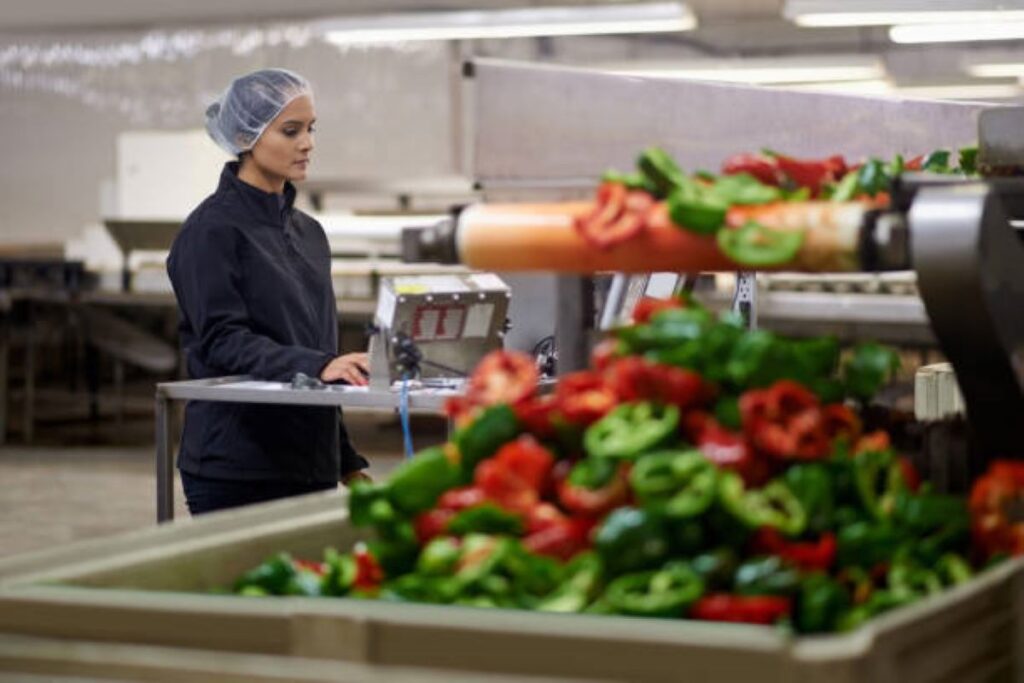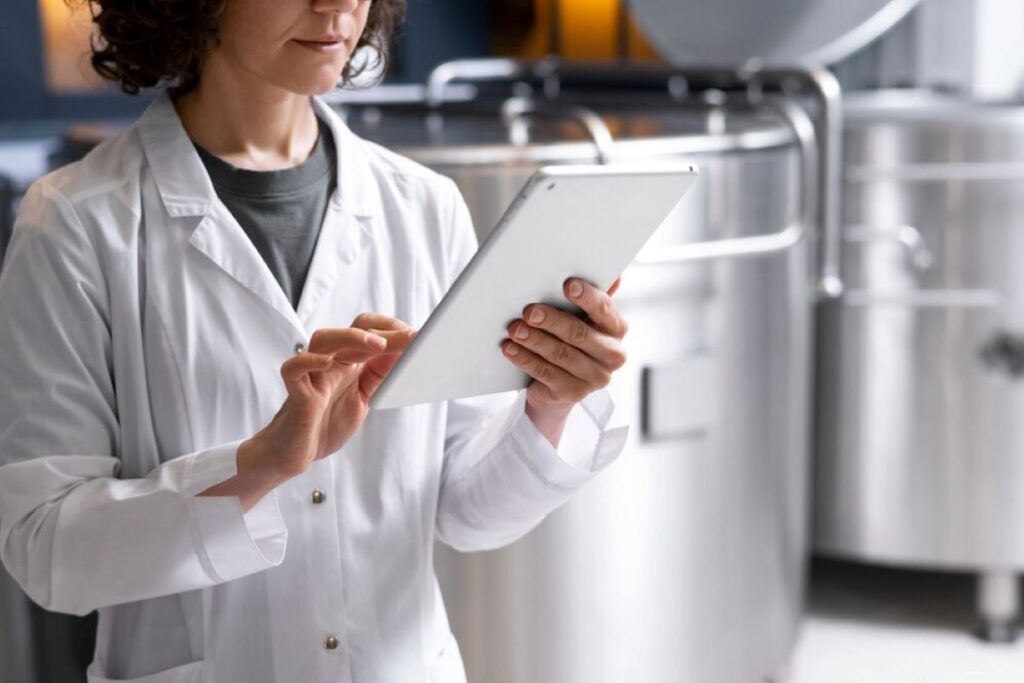Business temperature monitoring solutions are advanced systems designed to maintain precise environmental control in large facilities. These solutions use cutting-edge sensors, wireless networks, and intelligent software to provide real-time monitoring and management of temperature data.
Large facilities face specific challenges in keeping temperatures consistent across different areas:
- Multiple zones that require different temperature settings
- Critical areas that house sensitive equipment
- Storage spaces for materials that need specific temperatures
- Production floors with particular climate requirements
Implementing strong temperature monitoring systems is crucial for effective facility management. These solutions offer:
“Comprehensive environmental oversight serves as the backbone for protecting valuable assets and ensuring operational continuity in large-scale facilities.”
A well-designed monitoring system goes beyond just basic temperature control. It becomes a strategic tool that protects equipment, products, and processes while also optimising energy usage. This systematic approach to managing the environment helps facilities maintain ideal conditions around the clock, reducing risks and improving operational efficiency.
The Critical Role of Temperature Monitoring in Large Facilities
Temperature monitoring is crucial for the smooth operation of large facilities. By strategically implementing monitoring systems, facility managers can effectively address three key areas of management:
1. Asset Protection
Temperature fluctuations can pose significant risks to valuable assets across various types of facilities:
- Data Centres: Precise temperature control prevents server damage and maintains optimal performance
- Manufacturing Plants: Equipment longevity depends on stable environmental conditions
- Healthcare Facilities: Medical supplies and pharmaceuticals require specific temperature ranges
- Food Storage: Perishable goods demand consistent cooling to prevent spoilage
2. Operational Efficiency
Proper temperature monitoring directly impacts operational performance through:
- Energy Management: Real-time monitoring enables automated adjustments to HVAC systems
- Resource Allocation: Data-driven insights help optimise staff deployment and maintenance schedules
- Cost Reduction: Early detection of temperature anomalies prevents expensive equipment repairs
- Production Quality: Stable temperatures ensure consistent product quality in manufacturing processes
3. Regulatory Compliance
Temperature monitoring systems play a vital role in meeting industry standards:
- Healthcare: Compliance with strict pharmaceutical storage requirements
- Food Safety: Adherence to HACCP guidelines and food safety regulations
- Manufacturing: Meeting quality control standards for temperature-sensitive processes
- Data Protection: Maintaining environmental conditions for IT infrastructure compliance
The integration of advanced monitoring solutions transforms temperature control from a basic utility function into a strategic asset. Modern systems provide real-time alerts, historical data analysis, and predictive maintenance capabilities. These features enable facility managers to maintain optimal conditions while reducing operational costs and ensuring regulatory compliance.
Smart sensors and automated monitoring systems create a proactive approach to temperature management. This systematic oversight prevents costly disruptions, protects valuable assets, and maintains operational continuity across large-scale facilities.
In the brewing industry, for instance, maintaining specific temperature ranges is essential not only for the preservation of ingredients but also for the overall quality of the beer produced. A comprehensive Brewers’ Guide emphasizes the significance of precise temperature control throughout different stages of brewing.
Key Features and Components of Business Temperature Monitoring Solutions
Modern temperature monitoring systems combine sophisticated hardware and software components to create comprehensive environmental oversight solutions. These systems leverage advanced technology to deliver precise, reliable temperature monitoring across large facilities.
Wireless Sensor Networks
Wireless sensor networks form the backbone of contemporary temperature monitoring solutions:
- Extended Coverage Range: Networks span up to 100 metres indoors and 300 metres outdoors
- Mesh Network Capabilities: Sensors act as signal repeaters, extending coverage
- Flexible Deployment: Easy installation without complex wiring requirements
- Scalable Architecture: Add or relocate sensors based on changing facility needs
Data Collection and Management
The granularity of data collection enables precise temperature monitoring:
- Real-time temperature readings at customisable intervals
- Historical data logging for trend analysis
- Automated alerts for temperature threshold breaches
- Cloud-based storage for secure data retention
Central Hubs and Base Stations
These essential components serve as the command centre for temperature monitoring systems:
- Data Aggregation: Collect readings from multiple sensors
- Network Management: Monitor sensor health and connectivity
- Alert Processing: Generate notifications for system events
- Data Processing: Convert raw sensor data into actionable insights

Sensor Types and Applications
Different environments require specific sensor types:
- Standard Temperature Sensors
- Ambient temperature monitoring
- -40°C to +85°C measurement range
- ±0.5°C accuracy
- High-Precision Sensors
- Laboratory and medical storage monitoring
- -200°C to +200°C measurement range
- ±0.1°C accuracy
- Humidity-Combined Sensors
- Dual monitoring of temperature and relative humidity
- Ideal for sensitive storage areas
- Prevention of condensation issues
Integration Capabilities
Modern systems offer seamless integration options:
- Building Management Systems (BMS)
- Direct data exchange
- Centralised control interface
- Automated HVAC adjustments
- Legacy System Integration
- Wired sensor adapters
- Protocol conversion modules
- Data standardisation
Specialised Sensor Solutions
Industry-specific monitoring requirements demand specialised sensors:
- Freezer/Cold Storage Sensors
- Extended battery life in low temperatures
- Wireless signal optimisation for metal environments
- Condensation-resistant design
- Clean Room Sensors
- Sterilisable components
- Non-particle generating materials
- Calibration certification options
These comprehensive monitoring solutions create a robust framework for temperature control across large facilities. The combination of wireless networks, varied sensor types, and integration capabilities ensures accurate temperature monitoring for diverse operational requirements.
Benefits of Implementing Temperature Monitoring Systems in Large Facilities
Temperature monitoring systems deliver substantial advantages for large-scale facilities across multiple operational aspects. These sophisticated solutions transform how organisations manage their environmental conditions and protect valuable assets.
Asset Protection Through Environmental Stability
Precise temperature control safeguards sensitive equipment and valuable inventory from thermal damage. Modern monitoring systems maintain optimal conditions for:
- Electronic Equipment: Servers, telecommunications hardware, and data centres
- Perishable Goods: Food products, pharmaceuticals, and temperature-sensitive materials
- Manufacturing Equipment: Production line machinery and quality control systems
Cost-Effective Operations Management
Automated temperature monitoring prevents significant financial losses through:
- Real-time alerts for temperature deviations
- Immediate response protocols for environmental anomalies
- Predictive maintenance scheduling based on temperature patterns
- Reduced manual monitoring requirements
- Energy consumption optimisation
Regulatory Compliance and Safety Standards
Temperature monitoring systems help facilities meet strict regulatory requirements across different sectors:
- Healthcare: Medication storage conditions and patient care environments, adhering to Good Manufacturing Practices
- Food Service: Safe food storage and handling temperatures, following HACCP principles
- Manufacturing: Process control and product quality assurance
- Data Centres: Equipment operating conditions and cooling efficiency
Data-Driven Decision Making
Advanced monitoring solutions provide valuable insights through:
- Historical temperature trend analysis
- Performance metrics for cooling systems
- Documentation for audit trails
- Resource allocation optimisation
- Environmental impact assessment
These comprehensive monitoring systems integrate seamlessly with existing facility management infrastructure, providing robust protection for assets while ensuring operational efficiency. The implementation of these systems creates a proactive approach to environmental control, reducing risks and enhancing facility performance.

Customisation, Scalability, and Leading Solutions in the Market
Modern temperature monitoring solutions embrace a flexible approach to meet diverse facility requirements. These systems offer customisable options that adapt to specific operational needs:
- Sensor Placement Flexibility: Strategic positioning of sensors based on facility layout and critical monitoring points
- Alert Thresholds: Customised temperature parameters for different zones and equipment
- Reporting Formats: Tailored data presentation and analysis tools
- Integration Capabilities: Compatibility with existing building management systems
The scalability of these solutions enables seamless implementation across facilities of varying sizes. A small telecom closet might require basic temperature monitoring with a handful of sensors, while a large manufacturing facility demands:
- Extensive sensor networks
- Multiple monitoring zones
- Advanced analytics capabilities
- Redundant backup systems
Leading solutions like Squizify demonstrate this adaptability through:
“Secure SaaS platforms offering 24/7 data accessibility and automated record-keeping, suitable for both compact spaces and expansive facilities”
The versatility of modern monitoring systems supports diverse industries – from healthcare facilities requiring precise temperature control for medical supplies to manufacturing plants monitoring equipment conditions. This adaptability ensures businesses can start with essential monitoring needs and expand their system capabilities as operations grow.
In addition to temperature monitoring, some advanced systems also incorporate features such as fire safety measures. For instance, the Autocall system is designed to provide comprehensive fire safety solutions, which can be seamlessly integrated into existing infrastructure, ensuring both safety and compliance in various settings. You can learn more about its functionalities in this detailed Autocall Capabilities Overview.
See Also : Digital HACCP Software: The Future of Food Safety Monitoring
Conclusion
Temperature monitoring solutions for businesses are a crucial investment for large facilities that need to maintain precise control over their environment. These systems provide comprehensive environmental oversight through advanced sensor networks and real-time monitoring capabilities. By seamlessly integrating temperature monitoring solutions into existing infrastructure, businesses can create a strong framework for protecting their assets and improving operational efficiency.
Modern temperature monitoring systems demonstrate their value through:
- Precise environmental control across diverse facility zones
- Real-time alerts and automated response mechanisms
- Data-driven insights for operational optimisation
- Regulatory compliance documentation
- Resource allocation efficiency
The implementation of these solutions transforms large facility operations, enabling proactive temperature management and reducing the risk of costly disruptions. The combination of wireless sensors, centralised monitoring, and customisable alerts creates a powerful system for maintaining optimal conditions across expansive spaces.
The adoption of business temperature monitoring solutions positions large facilities to meet current operational demands while preparing for future challenges in environmental control and asset protection.

